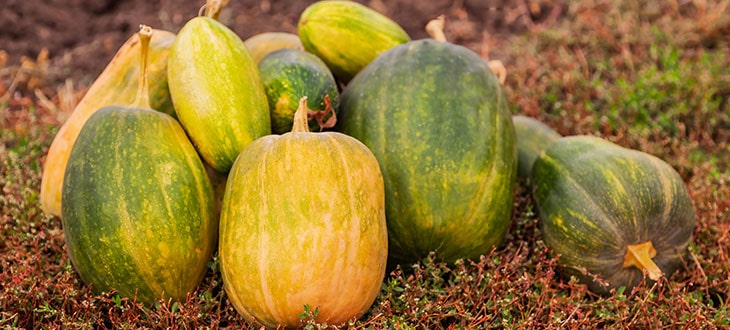How To Cure Pumpkins For Storage
Do you want to learn how to properly cure and store pumpkins so you can enjoy them for an extended period? Keep reading to learn everything about this process.
We all like to enjoy a roasted pumpkin in the winter or a sweet, delicious pumpkin pie. But did you know that many pumpkins end up in the trash because people don’t know how to store them properly? And most often, this happens because many skip an important stage in the pumpkins’ storage process – curing.
Contents
What Is Pumpkin Curing?
Pumpkin curing is the process of hardening the pumpkins’ skin, ripening immature fruits, and overall improving their taste.
While the term “curing” may sound confusing, it is nothing more than gradually drying out the pumpkin’s rind after the harvest. It is a step that should be performed whenever you intend to keep pumpkins for extended periods of time in their natural form.
Curing the pumpkins before storage is important for healing the superficial wounds and scratches in the fruit’s skin and enabling the stem’s portion still attached to the fruit to dry out entirely.
This pre-storing process enables the pumpkins to last longer before they start to decay. The though dried skin creates a protective barrier that keeps the bacteria and fungi from reaching the soft core of the fruit.
How To Cure Pumpkins
Pumpkins curing is a fairly simple process, but to increase its efficiency, it is important to consider a few factors starting right from the moment you harvest the fruits.
So, previously to curing your pumpkins, it’s essential to make sure you harvest them at the right time and in a way that you won’t hurt the fruit.
Pumpkins are usually ready for harvest by mid-fall, before the first frost. The rind should be firm and uniformly colored at the species with pigmented skin. Also, the joint where the fruit attaches to the vine should be hard and dried.
Use a pair of garden shears or a knife to detach the fruits from the vines (cut the stem 2 to 4 inches from the fruit). This way, part of the stem will remain attached to the fruit and won’t leave any open wounds through which bacterias and microorganisms can reach the core.
The next step before starting the curing process is to clean the pumpkin with a solution of water and organic liquid soap to remove all the dirt and bacteria that live on the skin of the fruit.
After the preparation stages, the pumpkins are ready for curing.
Place the pumpkins for 8 to 12 days in the sun or in a warm place with a temperature between 26 and 29°C (80-85°F) and relatively low humidity.
You can let the pumpkins cure directly in the field, but you must ensure they are protected from rain, insects, and animals. Also, they should be placed on a dry surface (like hay), not directly on the soil.
How Long Can You Store Pumpkins?
There are two main ways to store pumpkins for extended periods of time after harvesting them. The average time you can store these fruits varies depending on the method you choose. Each has advantages and disadvantages, but one is not suitable for storing large quantities of pumpkins.
So, two of the most common ways to preserve pumpkins in their raw shape are:
- Storing them in a space protected from sunlight and moisture
- Slicing and freezing them
The second method is viable when you want to store one or two pumpkins, but it is not suitable when you want, for example, to keep a harvest of 20 pumpkins because it would take up too much space, and you would need a huge freezer.
The average time you can store the pumpkins as you pick them from the vine and in the right conditions is between 1 and 3 months, but some varieties, like Hubbard or Buttercup, can even be kept for up to 6 months (source).
Through freezing, pumpkins can be stored for 8 to 10 months or more.
The time until pumpkins start to decay is influenced by various factors, such as storage conditions, when the fruit was harvested, whether or not it went through the curing process, the initial condition of the fruit, pumpkin variety, etc.
Storing Pumpkins After Curing
After the curing period is over, the pumpkins are ready to be stored over winter.
Place the pumpkins in a space with good air circulation and where there is a constant temperature between 50 and 55 ° F (10-13 ° C). It is recommended that the air humidity does not exceed 65-70%.
Do not place the pumpkins on top of each other or directly on cold surfaces such as concrete. Leave a bit of space between them to allow good airflow.
Immediately remove any pumpkin that has traces of mold on the surface, spots where the skin is soft, or clear marks that the fruit has begun to rot.
Final Word
Pumpkin curing is an important operation to ensure that your harvest will last successfully for as long as possible. This process not only increases the chances that the pumpkins will not rot during storage, but at the same time helps to ripen the fruits picked up too early and improves their flavor.
Pumpkins bought from supermarkets have already undergone this procedure. Therefore, there’s no need to repeat the process.

